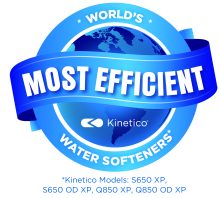A Fresh Start: Why Clean, Filtered Water Belongs in Your New Year’s Health Plan
With the new year, many homeowners think about fresh starts, like a new diet plan, an exercise routine, or more savings. One simple thing that can give you a good, fresh start is clean, filtered water. From your energy levels to your skin, hair, and digestion, clean water fuels every part of your body. Adding clean water to your new year’s health plan is an investment in your well-being. It can be one of the easiest and most powerful starts for several reasons.
Boosts Energy
Adequate water intake is vital for oxygen and nutrients to reach your brain, muscles, and organs. It helps keep you energized throughout the day, especially in extreme summers or after exercise. Studies have shown that a loss of even 1–3% of the body’s water can leave you feeling dehydrated, affecting your energy levels, mood, memory, and focus. Drinking enough water helps lower fatigue and maintain stamina.
Supports Body Functions
Proper hydration helps in good digestion and keeps the immune system healthy. It breaks down food, dissolves nutrients, and supports bowel movements, reducing the risk of constipation and digestive discomfort. It also supports blood circulation, nutrient transport, waste removal, and the body’s natural detoxification processes.
Healthy Skin and Hair
Filtered water is good for sensitive skin or scalp and helps maintain skin elasticity, texture, and softness. It reduces your skin and hair exposure to chlorine, heavy metals, and other impurities, which strip away natural oils from the skin and scalp. Hydrated skin and hair remain supple, radiant, and free from dryness, irritation, and damage.
Brings Mental Clarity
Dehydration can affect concentration, memory, and overall cognitive performance. Adequate water intake helps the brain maintain its functions, deliver oxygen and nutrients, support nerve signaling, and ensure optimal performance. It also helps regulate mood and stress levels.
The improved taste of filtered water makes regular hydration a habit, which in turn supports focus and clearer thinking.
Removes Harmful Contaminants
Tap water contains impurities like chlorine, heavy metals, and other harmful contaminants. Consumption of unfiltered water in the long term may pose health risks. Filtered water reduces your intake of these contaminants and protects your internal organs, like your kidneys. It turns water into a source of nourishment and makes you more likely to drink enough of it because of its better taste.
Helps in Weight Management
Water has zero calories. Drinking enough of it helps reduce overall calorie intake, which helps in weight control. Drinking one or two glasses of water before meals makes you feel fuller. It also reduces the likelihood of you overeating, boosts metabolism, and helps your body burn calories, especially if you combine it with a balanced diet and workout.
Reach Out to Rabb Water
Start this new year by adding filtered water to your routine. At Rabb Water Systems, we deliver water filtration in Warsaw and improve your health with chemical-free water, which boosts your energy and supports your body functions. Reach out to us now to make filtered water your daily companion.








